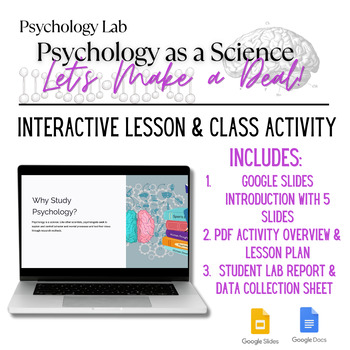Psychology as Science Lab: Let's Make a Deal! (Monty Hall Paradox)
- Zip
- Google Apps™

Description
Why do we study Psychology?
The Monty Hall Paradox is a classic probability problem that challenges students' intuitive thinking. In this lab, they will explore how people's decisions can be influenced by cognitive biases and how empirical reasoning can help us understand and overcome these biases.
The Monty Hall Paradox is named after the host of the game show "Let's Make a Deal," Monty Hall. The scenario revolves around a game involving three doors and a hidden prize.
Through this lab, students aim to explore how empirical reasoning and data collection can help us understand and overcome cognitive biases. By running simulations and analyzing the results, you'll gain a deeper appreciation for the role of evidence-based thinking in making informed decisions, both in psychology and in everyday situations. Let's dive into the activity and see how our choices play out in practice!
This lab includes:
- A Google Slides Introduction Presentation
- A PDF overview and Lesson Instructions
- A Google Doc lab sheet with working links for students
- A link to a Monty Hall Paradox simulation





